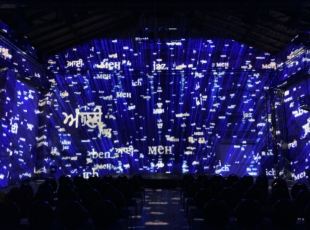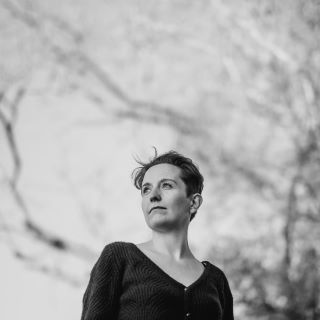When Google enables you to see sounds and listen to paintings
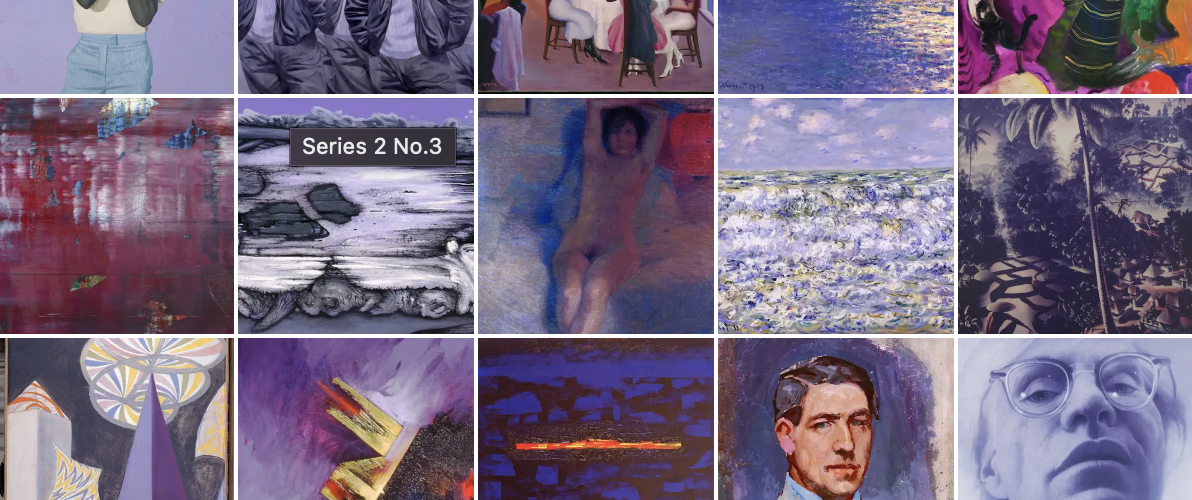
Article author :
On its debut in 2011, the Google Art Project gave you the opportunity to virtually visit 17 museums across the world. Today, in 2023, the project has grown, undergone a name change, and numbers over 2,000 partner cultural institutions (museums, archives, global heritage sites, local communities, etc.). A new way of interacting with digital culture, both in terms of discovering it, the way it is packaged and its conservation. Let’s zoom in on Google Arts & Culture.
Avec kingkong, on est plutôt de celleux qui se nourrissent de l’art et de la culture en direct : musées, expositions,
With kingkong, we are one of those people who prefer to experience art and culture in person: museums, exhibitions, events, meetings. On the one hand, we love the buzz of a crowd eager to discover new things and, on the other, we get goosebumps from the religious hush which settles before an enigmatic work. We will therefore leave to your imagination the despair of 2020, when we found the doors of our much-loved cultural sites slammed shut. Yet, whilst checking out a film on Netflix bears no comparison with experiencing it in a cinema, we all the same had well-stocked audiovisual content available to make up for the absences in our life (and the shops were open, so there was a ready supply of popcorn to explode in the microwave).
It was consequently during this period that we came across a hyper-innovative concept: Google Arts & Culture. Of course, at that time, this online tool was purely and simply sold as a means of ‘bringing museums into your living rooms.’ You could thereby in 2 or 3 clicks visit sites closed due to COVID, whether they were near to or some distance from where you lived (the Musée d’Orsay in Paris vs. the MoMa in New York). The concept was true to its word. And, just to be completely frank with you, we probably made more cultural excursions online than in a so-called ‘normal’ period. We would never have made the journey to Houston to see the Museum of Fine Arts housed there, and yet its collections are rich and fabulous.
Google Arts & Culture thus offered us:
- A space-time opportunity: the Brussels-New York return journey, which takes you a minute and a half, when the Wi-Fi connection gets all sluggish.
- A financial opportunity: we all know the saying, ‘If something is free, you’re the product.’ We could discuss that for hours on end but, nevertheless, having access to this tool without spending a nickel (entrance fee and travel costs) was a point in its favour.
- An intellectual opportunity: the whole cultural packaging, in other words, explanations, interviews, and the name and title plaques for each work translated into French. A joy.
.
Once this period came to an end, we once again settled into the routine of work, going out with friends and the essential need to sleep. But we never abandoned this platform, because it had genuinely piqued our curiosity. We thus decided to dig a little deeper into the nuts and bolts of it.
For starters, the BASICS: to access it, all you have to do is go to https://artsandculture.google.com. You can gain admittance either through this link or via the application available on IOS or Android. And whilst the design of these platforms may adapt to market innovations, nevertheless the basics remain the same. The platform is therefore shaped around three key verbs: explore, play, and visit.
Explore
Explore, discover, get informed, better yourself, learn
This category first and foremost gives us the opportunity to discover art and culture in the broadest sense. You can filter your searches by the type of art, the artist, geographical area, historical period, by medium, by art movement, theme, collection, and even your favourite colour. The application thus offers you a range of colourful art works spanning the centuries. It’s completely enthralling. We for that matter tried it out with mauve, a colour we adore above all others, and whilst we had previously assumed that this particular tone had been banished from all available art forms, well, obviously, we got that one wrong.
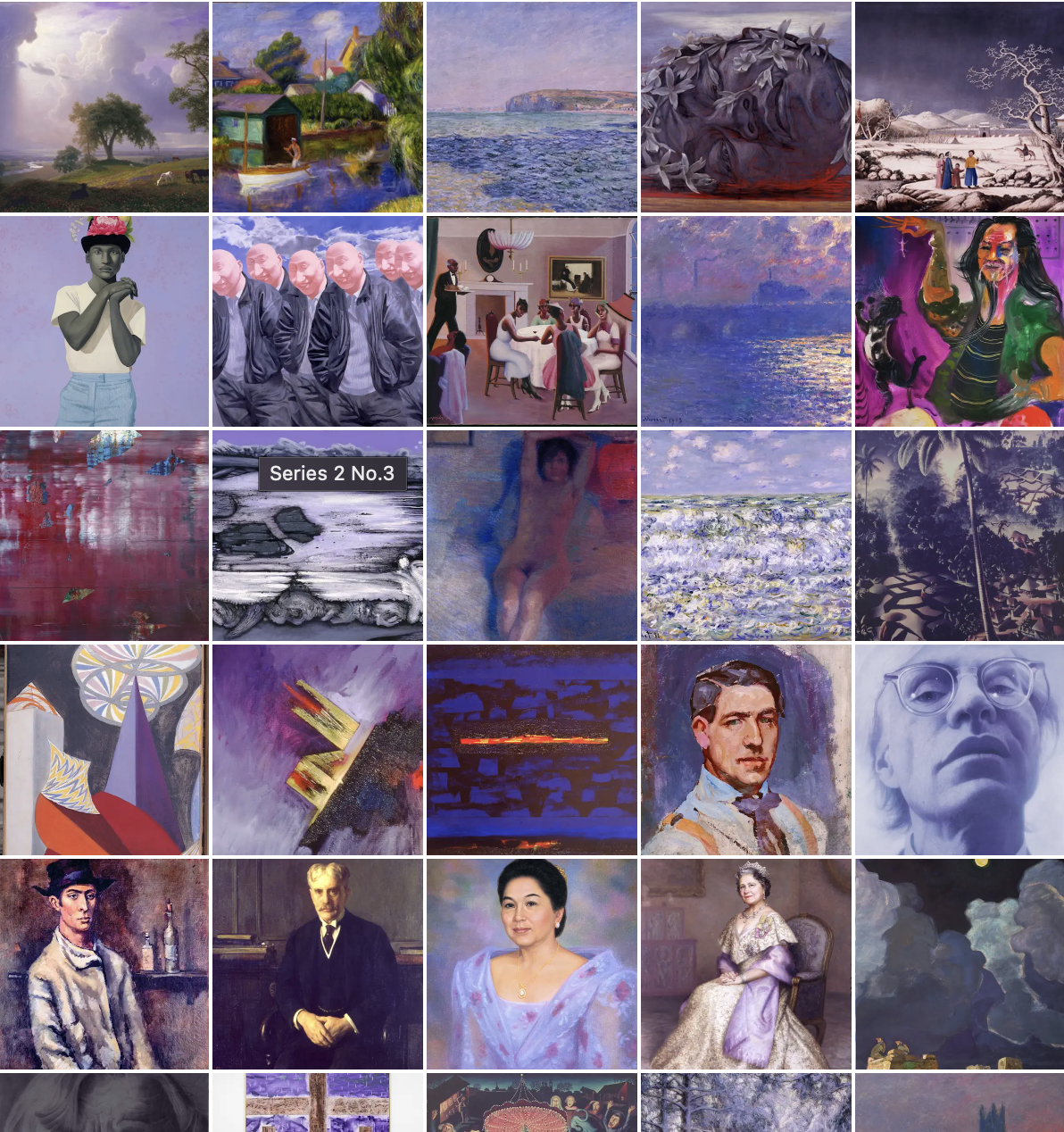
In this example, you merely need to click on any work to have access to a name and title plaque which is both informative (at the minimum you are always given the creator, the medium, the title, the technique and the date) and explanatory (in certain cases).
A ‘proximity’ feature (which you geolocate, obviously) indicates on a map the partner cultural spaces near to your geographical position.
Play
Play, test, experiment, create
Being just big kids really, this was definitely the section we enjoyed the most whilst discovering this platform (and take it from us, we threw ourselves into it, headlong, for several hours … it might have been days. Whatever).
As so many people do, we started with selfie art. Are you wondering what on earth that is? Let us bring you up to speed. The application allows you to take a photograph of yourself, as a selfie. Nothing very unusual, so far. And then, thanks to facial analysis, it matches up your facial features with those found in works of art. Apart from the ludic aspect of the game, the platform obviously steers you towards commentary about the painting and the art movement it is a part of.
We thus look 65% like Millicent Watson, as painted by George Romney, and resemble the painting ‘Rittrato di Palma Bucarelli’ by Alberto Savinio to a degree of 62%.

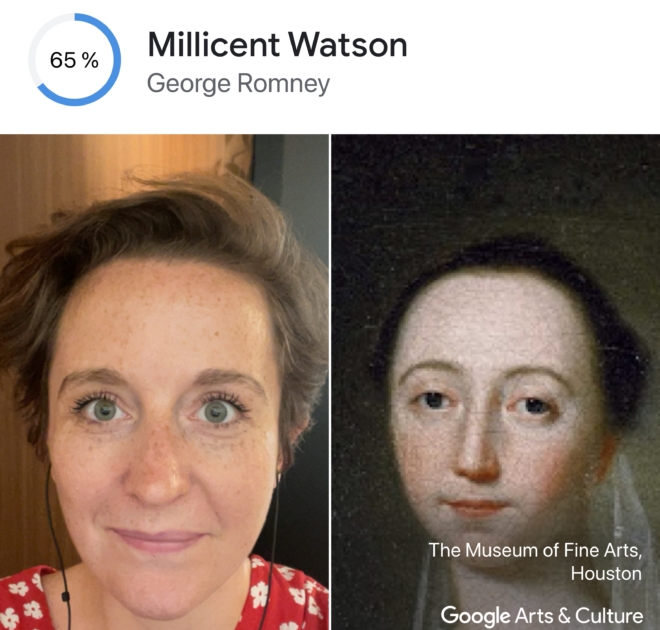
As is to be expected, Google Arts & Culture is packed with little quizzes, short surveys, which make the experience dynamic and hyper-engaging for the user.
But we above all wanted to talk to you about a game which had us doing several double-takes, and from which the title of this article derives. Amongst the ocean of intuitive and experiential activities available, it is ‘Play a Kandinsky’ we have decided to showcase for you. You may or may not be aware that this artist was endowed with the gift of synaesthesia. Google, moreover, explains the term very neatly: ‘it is an involuntary neurological condition in which a person perceives several senses as being connected. In Kandinsky’s case, the sense of hearing is linked to the sense of sight, sounds and colours being intimately linked in his mind. He can thus ‘see music.’ And this specific aptitude leads him to attempt to transcribe, in painting, sounds and music: he thereby slips towards the abstract movement.’
On the basis of this knowledge, the platform allows you to live the experience of sound linked to colours and shapes. For you to be able to do so, Google Arts & Culture has produced a short step-by-step introduction. Step 1 enables you to understand the concept of synaesthesia, and to listen to sounds according to the colours which flow by one after the other. Step 2 has you listening to the sounds of instruments by connecting them with painted shapes and the emotions felt. You therefore hear that red is a violin and that it represents restlessness, that yellow is an insolent trumpet, and that blue is a heavy and oppressive organ.
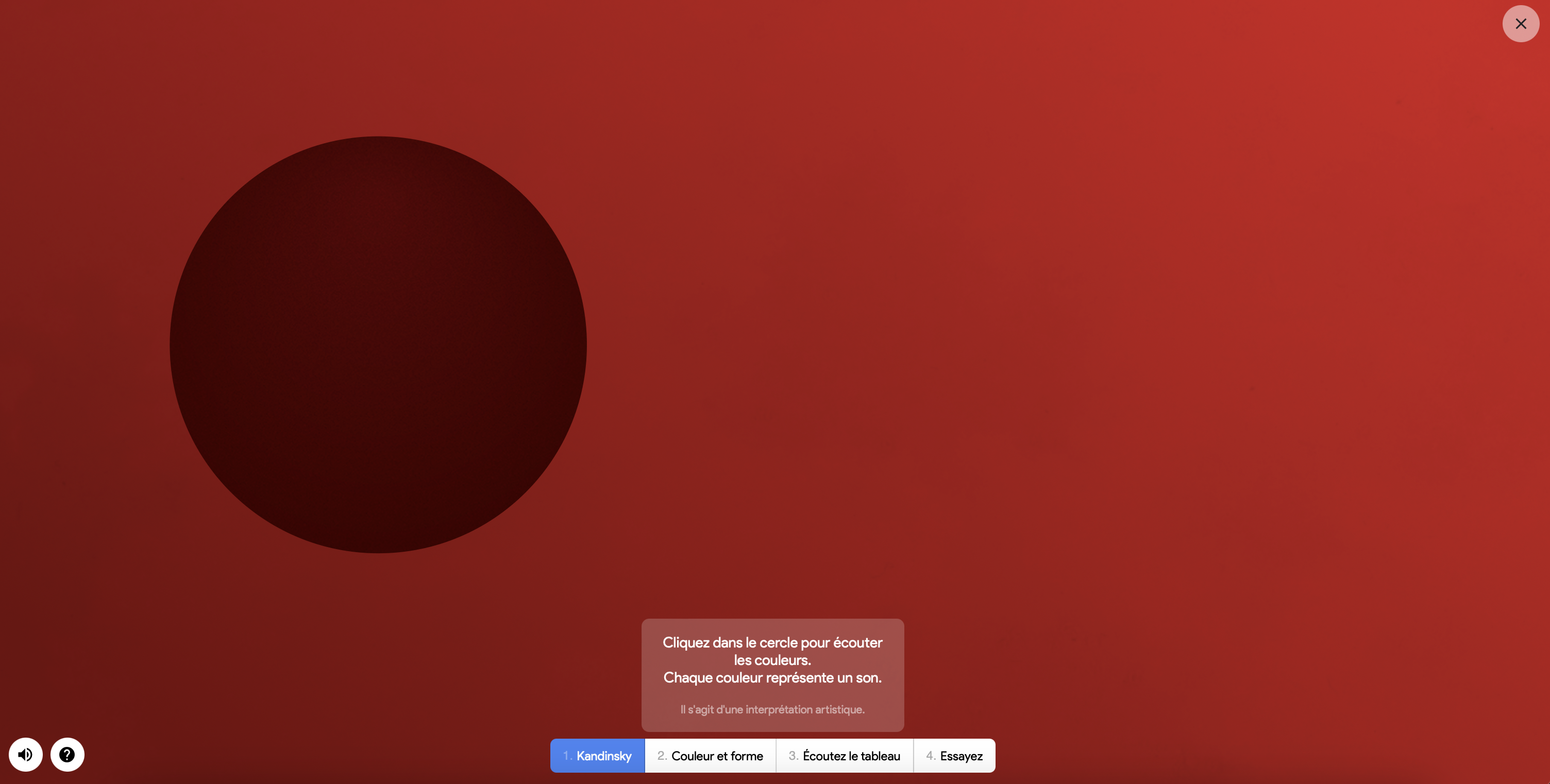
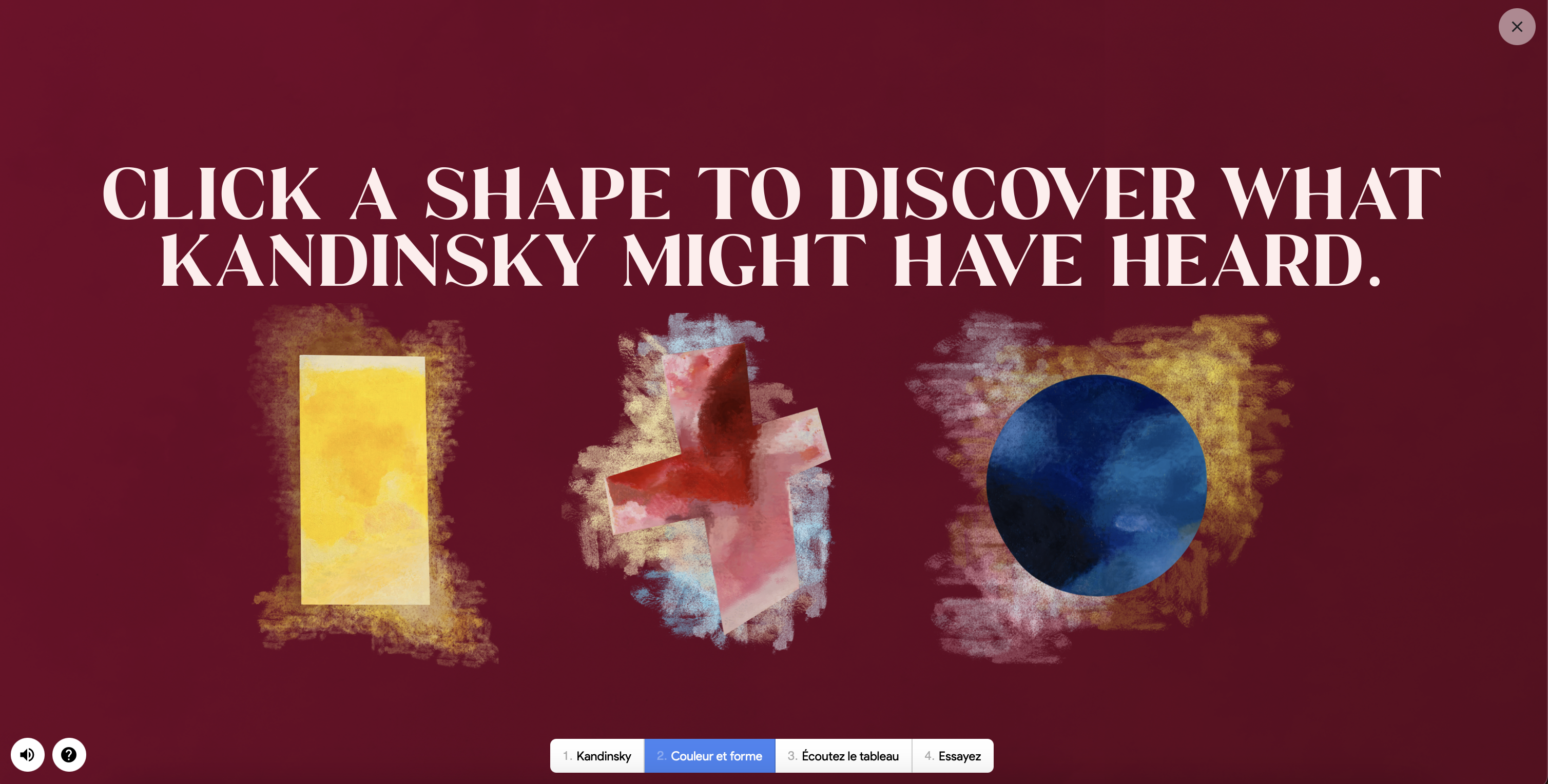
Step 3 offers the possibility of listening to Kandinsky’s famous painting, ‘Yellow-Red-Blue.’ Absolutely mind-blowing.
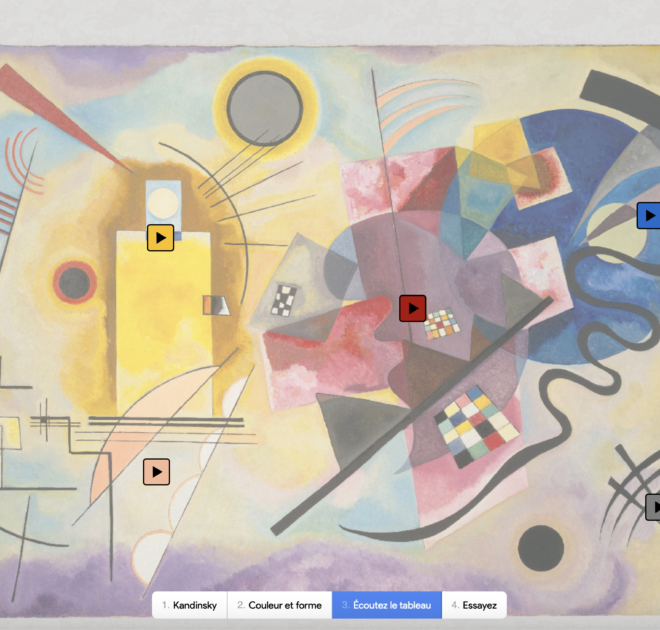
And finally, the last step enables you to experience your own emotions in the painting. Merely select the feelings you are having on that particular day (energy and alive for my part).
Alright, given that we have to restrict ourselves in terms of the number of characters used, we could, furthermore, offer you another experience: painting with music. In a few short lines, you just have to choose the sound environment you wish to work in (underwater is our favourite), and then give free rein to your creativity by drawing on your screen, thanks to the movements of your mouse. A little tip, you can choose your musical instrument on the bottom left of the screen. And then, in the end, you might come up with something like this: https://g.co/arts/h7ENcCS8b9zYRDkU7 (OK, we never claimed to be Beethoven).
Visit
Visit, meander, analyse
It is in this category that you really appreciate the full value of linking the digital to culture. As we said at the very beginning, Google Arts & Culture above all allows you to visit museums and exhibitions. We instantly fell for the exhibition spaces modelled in 3D, such as here or here.
More widely known, Google Street View also offers the opportunity to travel so that you get to stand in front of incredible monuments, such as the Prambanan temples in Indonesia or the Great Pyramids of Egypt. It’s never the same as in real life, but it’s impressive, all the same.
But what we really, really want to tell you about, is the art camera, which allows you to have your nose pressed up against the works of art, without running the risk of being told off by the custodian for having got far too close to the painting.
The art camera is an automated camera which takes hundreds of snaps in close-up and in high resolution. Once all these photographs are in the can, an editing software programme enables them to be glued together, to create a fabulous image which you can slip into and see every last detail of. In 2023, thousands of paintings have been digitised and made available on the platform (with, once again, wonderful cultural packaging which makes the art accessible to everyone). Take the example of Paul Signac’s ‘Port of Rotterdam.’ You merely need to zoom in to discover the artist’s brushworks and understand how the foundations of the impressionist movement were established.
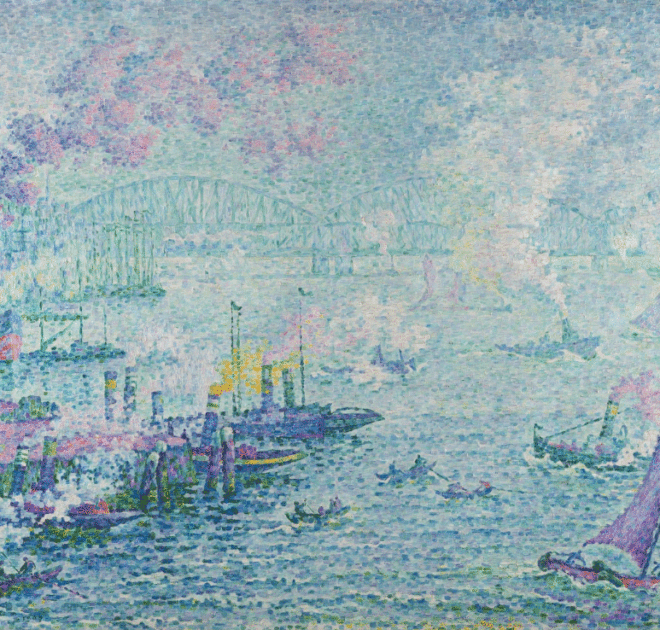
A story, projects or an idea to share?
Suggest your content on kingkong.
also discover
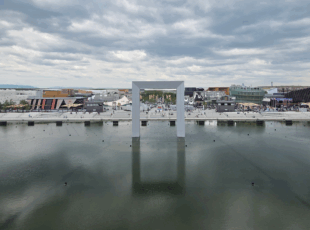
From Belgium to Japan, the new territories of creative digital creativity
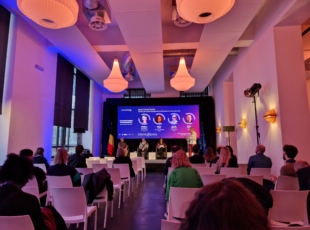
Stereopsia, the key European immersive technologies hub
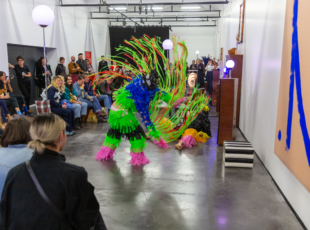
The Centre Wallonie-Bruxelles: a billion blue blistering harmonies
